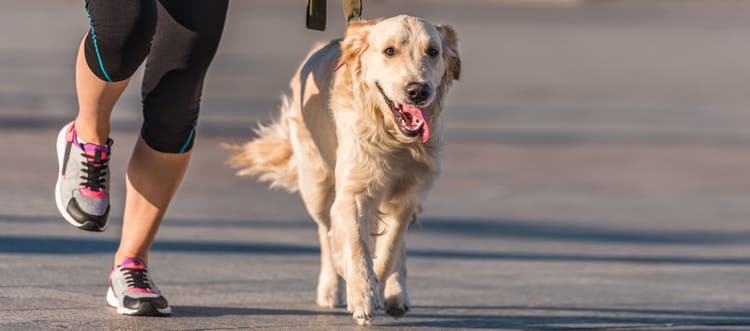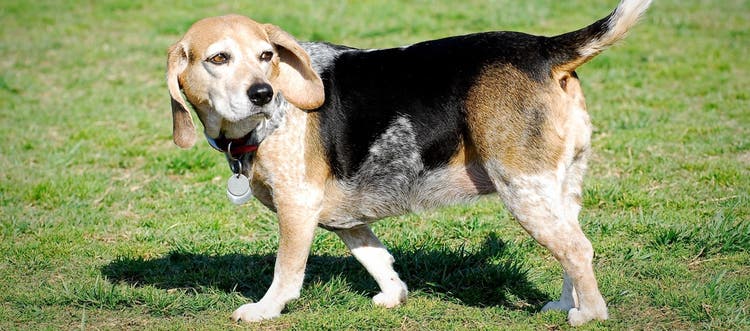How to tell your pet may be hurting.
As a dog owner, you know dogs are expressive animals. They experience joy, sadness, fear and pain — just like us. But when it comes to pain, dogs can be difficult to read. They won't necessarily cry out, walk with a limp or show any immediately obvious signs of discomfort.
Let's go over some of the reasons why your dog could be hurting, how to recognize signs of pain in dogs and the steps you can take to help your pet.
Why Is My Dog in Pain?
As much as we try to protect our dogs, it's highly likely they will experience some form of pain in their lifetime. Traumatic events such as squabbles with other dogs, falls and playtime injuries can all hurt our canine companions. Other potential causes of pain include:
- Illnesses like pancreatitis and gastroenteritis
- Torn ligaments, such as a torn ACL
- Infections, including ear infections and urinary tract infections
- Chronic (long-term) diseases such as dental disease or osteoarthritis
In addition, many short-legged dog breeds, such as dachshunds and basset hounds, can suffer from back pain due to their anatomy.1
4 Signs a Dog Could Be in Pain
While some dogs may show obvious signs of pain, such as whining, limping or shaking, others are more stoic and hide it.2 This might be due to their ancestry of living in the wild, where showing any weakness could make them vulnerable to an attack.
Here are four sneaky signs to look for that may indicate your dog is in pain.
1. Changes in Behavior
Dogs in pain may avoid or hide from their family.3 They may also become quiet, withdrawn or even aggressive in an attempt to protect themselves from further pain by staying isolated.
Your dog could be in pain if they are:
- Sleeping in odd places
- Avoiding contact with others
- No longer interested in playing
- Suddenly reactive or aggressive around you or other pets
- Not eating as much as usual4
- Tense or anxious
- Trembling or panting
- Barking excessively or squinting
- Suddenly restless
Keep in mind that every dog is different: Some pets may do the opposite, becoming clingy and staying near their owner. The key is noticing a change in the way your dog behaves or interacts with you.
2. Decreased Activity Level
Dogs experiencing some sort of back or orthopedic pain often may not perform everyday tasks like they used to.3,5 For instance, dogs in pain may:
- Hesitate to go up or down stairs
- Be unable to jump up on the couch
- Have a tough time lying down or getting up after lying down
- Not want to run around or play fetch in the backyard as usual
- Slow down or lag behind on walks
- Walk stiffly or with a limp
3. Change in Body Posture
If your dog is suddenly standing in a strange manner, they could be in pain. Dogs that are in pain due to stomach issues or neck problems may:
- Stand with a hunched back
- Hang their head low
- Have a tucked-up belly
- Tuck their tail between their legs
A more dramatic sign of belly pain is when your dog stands in the "praying position," which is when a dog holds their rear end up in the air with their front legs and head lowered to the floor.4 This position can look similar to a playing posture, but your dog will be in no mood for playtime.
Changes in posture associated with leg or joint pain include holding a leg up off the floor or sitting with the back legs kicked out away from the body.
4. Excessive Licking or Chewing
Dogs in pain may repeatedly lick or chew at any areas of discomfort to try to alleviate the pain.3 However, this behavior can also indicate behavioral issues, a skin condition or flea allergy dermatitis.
How to Help a Dog in Pain
If you are even a little bit suspicious that your dog is in pain, contact your veterinarian. Don't reach for human over-the-counter pain medications, such as ibuprofen or acetaminophen, because these can do more harm than good.
Your vet will make sure your dog receives the right type of pain medication that’s safe for dogs. They will also advise you if other therapies, such as a cold or warm compresses and crate rest, are appropriate for your pup.
References
- Packer, Rowena M. A., et al. "How Long and Low Can You Go? Effect of Conformation on the Risk of Thoracolumbar Intervertebral Disc Extrusion in Domestic Dogs." PloS One, vol. 8, no. 7, e69650. 24 Jul. 2013. https://www.ncbi.nlm.nih.gov/pmc/articles/PMC3722130/
- Sharkey, Michele. "The Challenges of Assessing Osteoarthritis and Postoperative Pain in Dogs." The AAPS Journal, vol. 15, no. 2, 2013, pp. 598-607. https://www.ncbi.nlm.nih.gov/pmc/articles/PMC3675751/
- Mills, Daniel S., et al. "Pain and Problem Behavior in Cats and Dogs." Animals: An Open Access Journal from MDPI, vol. 10, no. 2, 18 Feb. 2020, p. 318. https://www.ncbi.nlm.nih.gov/pmc/articles/PMC7071134/
- Hernandez-Avalos, Ismael, et al. "Review of Different Methods Used for Clinical Recognition and Assessment of Pain in Dogs and Cats." International Journal of Veterinary Science & Medicine, vol. 7, no. 1, 2019, pp. 43-54. https://www.ncbi.nlm.nih.gov/pmc/articles/PMC6882480/
- Bland, Stephanie D. "Canine Osteoarthritis and Treatments: A Review." Veterinary Science Development, vol. 5, no. 2, 17 Jul. 2015. https://www.pagepress.org/journals/index.php/vsd/article/view/5931










